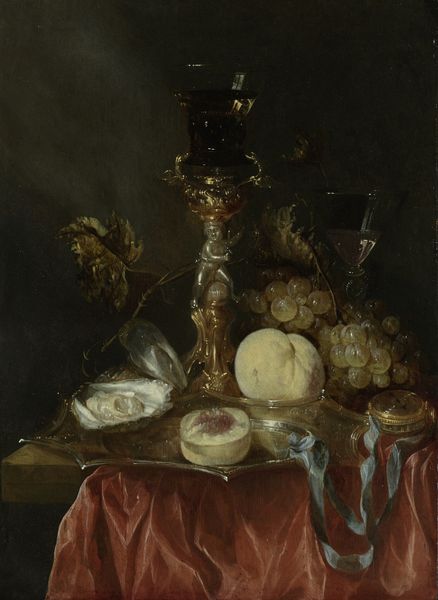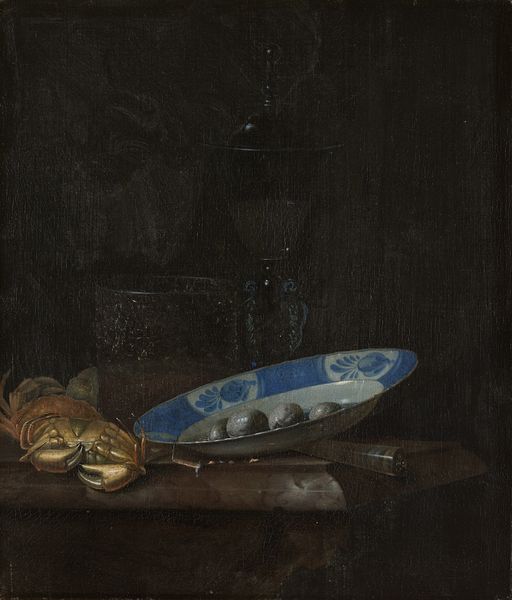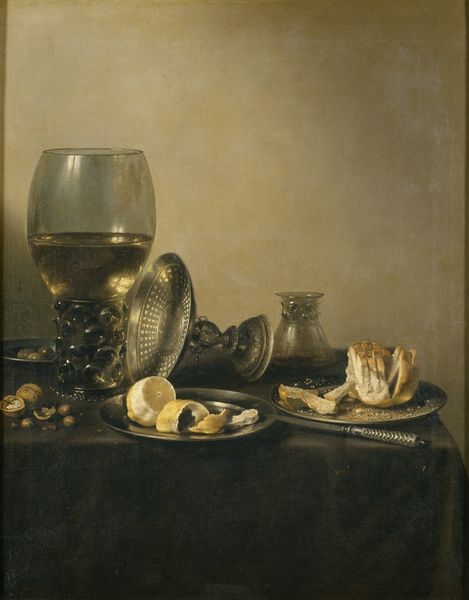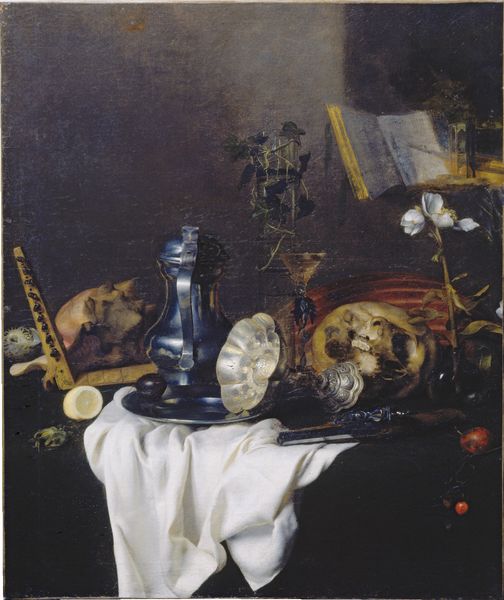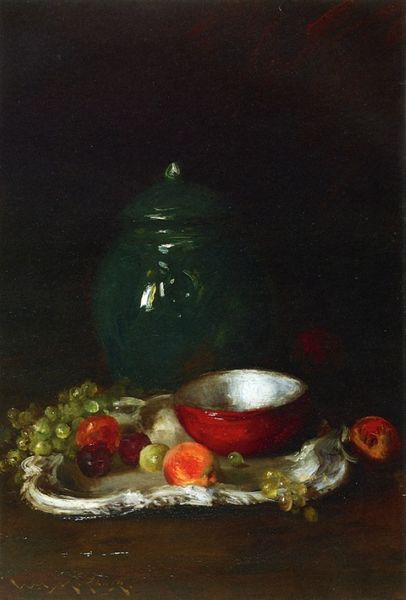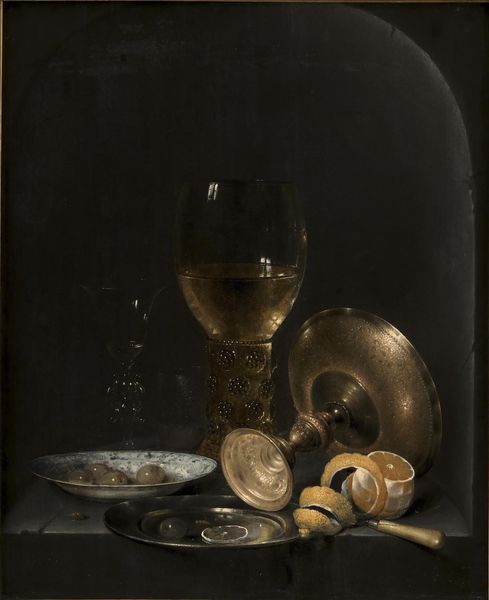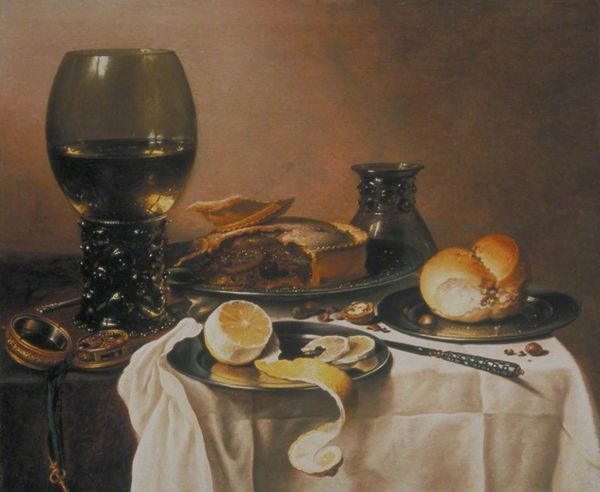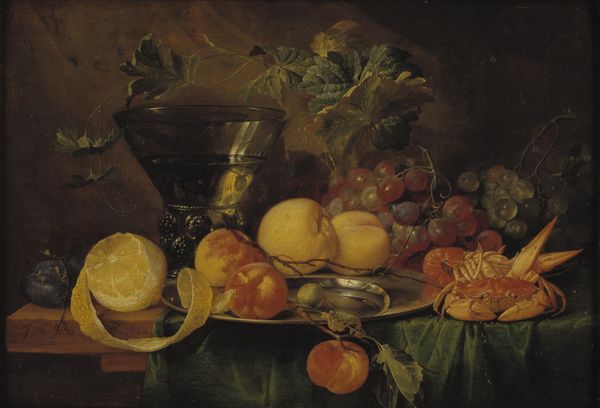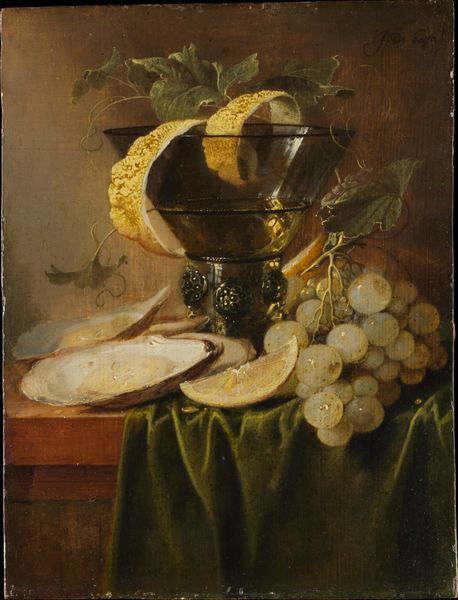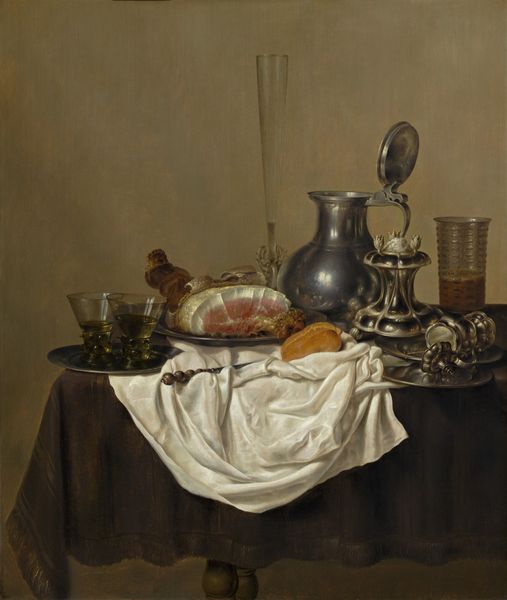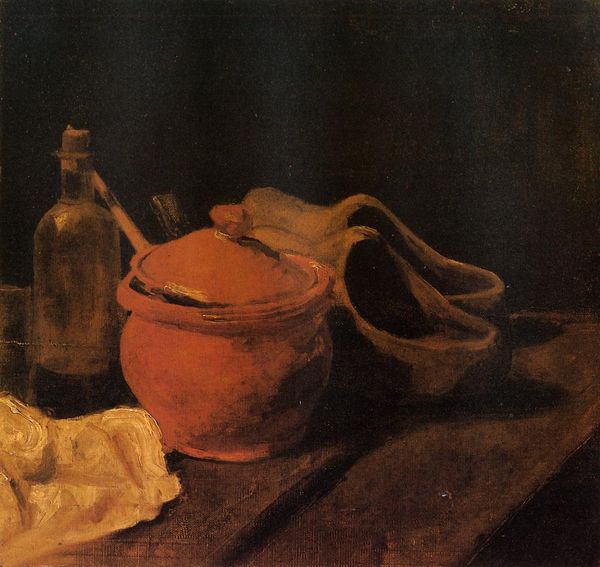
oil-paint
#
baroque
#
dutch-golden-age
#
oil-paint
#
oil painting
Dimensions: 59.7 x 47.4 cm
Copyright: Public Domain
Curator: This oil painting, “Still Life with Oranges,” was completed around 1670 by Willem Kalf. You can currently find it hanging on display at the Städel Museum. What are your first impressions? Editor: Dark. Rich. Dramatic. Almost theatrical, really. The shadows feel like they are swallowing the objects, but the highlights on the fruit practically vibrate. The orange itself pops—it's the stage light here. Curator: Kalf was a master of Dutch Golden Age still life, really emphasizing luxury goods. Consider the sheen on that seashell, next to the glass goblets. There's also something distinctly Baroque in how he uses light and shadow to emphasize texture and volume. The Dutch really transformed the "banal" into things of significance through the symbols and metaphors present in the imagery of everyday objects. Editor: And the light isn't just about volume; it feels symbolic, illuminating the transience of beauty, right? These oranges, so vibrant now, will inevitably decay. The precariousness of that goblet seems deliberate, ready to tumble. But I'm especially intrigued by that blue-and-white bowl. I can feel that its iconography bridges both the orient and the occident in ways the artist may or may not have intended. Its design alludes to longer-standing notions of refinement, worldliness, even spirituality. Curator: That Chinese porcelain is absolutely central, literally and figuratively, speaking to the Dutch East India Company and global trade. Kalf often included exotic imported goods as a way to signify prosperity and refined taste. Dutch culture often mirrored itself through these possessions. It begs the question of how self-portraits took place through domestic spaces. Editor: Exactly, that's a potent signifier in itself. It’s not just a bowl, but a declaration of cultural capital. But what truly fascinates me is how the arrangement creates a dialogue, or even an argument, between earthly pleasures – the fruit, the wine – and a deeper, more spiritual longing for understanding and legacy. That quiet hum in all still lifes that somehow capture human anxieties so gracefully. Curator: Yes, a perfectly palatable collision of vanitas and mercantilism! Thanks for untangling those threads for us! Editor: Always a pleasure! Now I'm off to find an orange. And a history book...
Comments
No comments
Be the first to comment and join the conversation on the ultimate creative platform.

